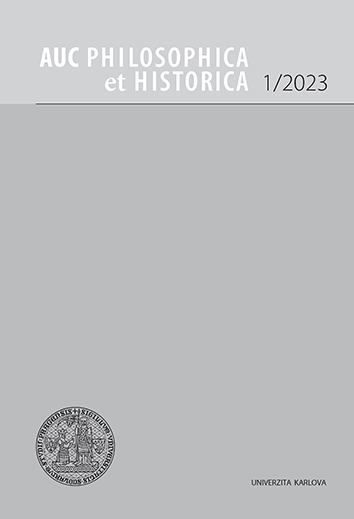AUC Philosophica et Historica je víceoborový akademický časopis zaměřený na humanitní a společenskovědné obory (filozofie, psychologie, pedagogika, sociologie, obecné, české a hospodářské dějiny, pomocné vědy historické a archivnictví, etnologie).
Časopis je indexován v databázích CEEOL, DOAJ a EBSCO.
AUC PHILOSOPHICA ET HISTORICA, Vol 2006 No 1 (2006), 95–112
Vývoj obav ze zločinu v české společnosti
[Trends in Fear of Crime in Czech Society]
Jiří Buriánek
DOI: https://doi.org/10.14712/24647055.2018.184
zveřejněno: 18. 01. 2018
Abstract
Security risks complete the picture of the contemporary "risk society". Even though they are the subject of rational discourse, a complex of subjective meanings often prevails (Crawford 2002) and threatens to set off a moral panic. Well-known paradoxes of fear of crime emerge from surveys and we may ask whether the measurement of fear is infected by the perception of other, mostly social problems (Sessar 2001) or whether it represents an "epiphenomenon of watching TV" (Young 1999). The paper employs he inter-actionist model of K. Boers (2003) and supports the hypothesis of the presence of auto-regulative mechanisms that enable societies undergoing transformation (like the Czech Republic or East Germany) to react generally positively to the increase of crime rates. Using data from replicated surveys in the CR on fear of crime and victimization, the paper demonstrates the effects of risk normalisation. The feeling of security among citizens is continuing to increase, but there is one exception, i.e. the situation in Prague where attitudes reflect a higher risk of victimization. Differences between men and women as regards feelings of safety have been identified specifically in relation to victimization, but these are probably related to the question of vulnerability and experience of domestic violence. The paper shows differences in the perception of a range of particular risks in terms of both fear and likelihood. It also examines the trend in levels of trust in institutions where a decline has been detected in the recent period. In conclusion it offers a preliminary typology of attitudes to risks in terms of level of fear and particular area involved.
